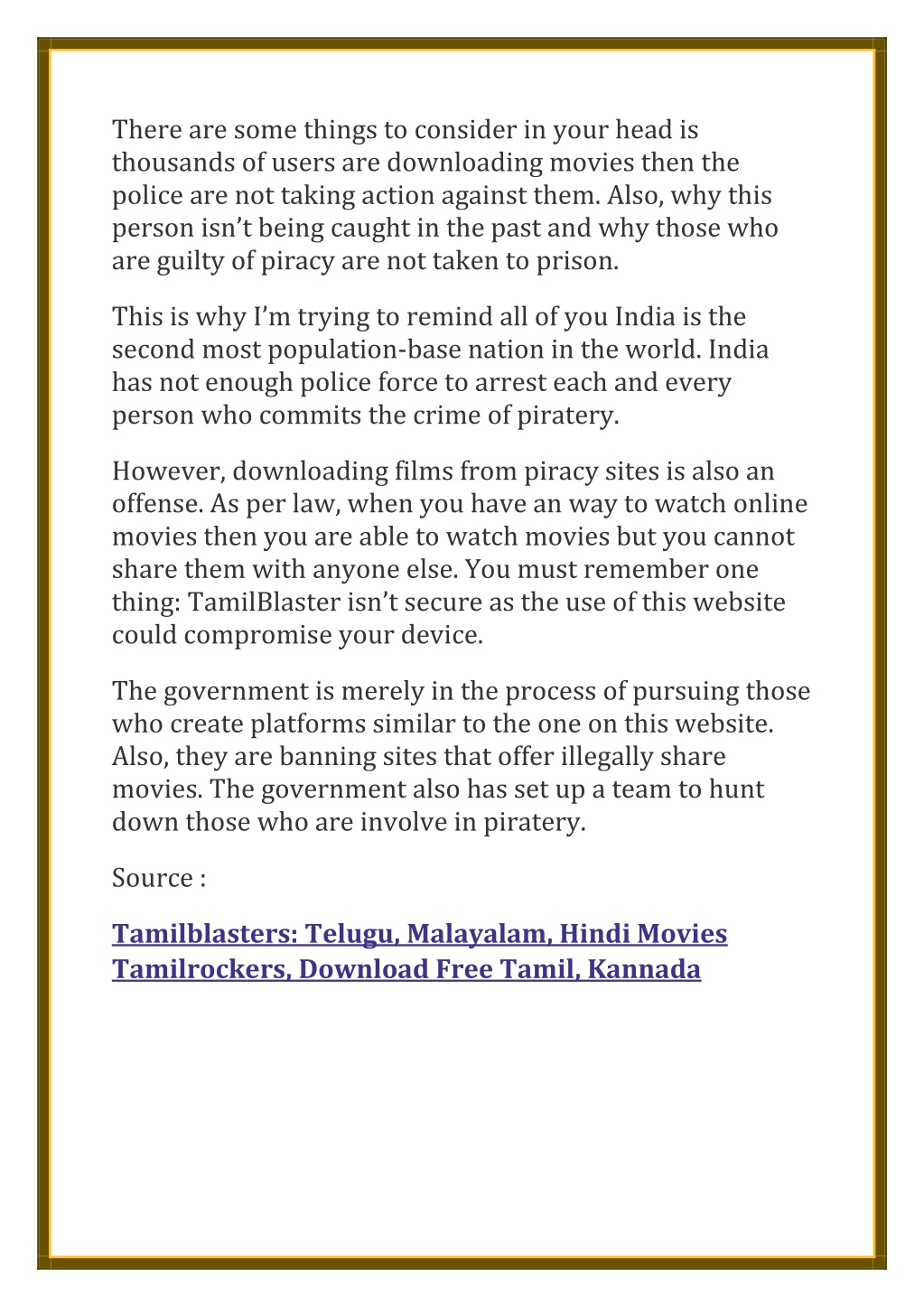Is the world of Tamil cinema truly ready for a new era of digital piracy? A bold statement must be made: the rise of platforms like Tamilblasters signifies an alarming trend that threatens the very foundation of legitimate entertainment distribution. This is not merely about downloading movies; it's about understanding the implications of such actions on artists, producers, and the industry as a whole.
The debate surrounding Tamilblasters has been ongoing for years, yet its presence continues to intrigue many. From the initial surge in popularity to the constant quest for updated links, this platform has managed to stay relevant despite legal challenges. The term Tamilblasters new link frequently trends across social media platforms, sparking discussions among fans who seek unrestricted access to Tamil films. However, beneath the surface lies a complex web of copyright violations, ethical dilemmas, and technological advancements that warrant deeper scrutiny. As we delve into this topic, one cannot ignore the broader impact on content creators and consumers alike.
| Bio Data | Details |
|---|---|
| Name | Tamilblasters (Piracy Platform) |
| Origin | India |
| Established | Approximately 2015 |
| Primary Function | Illegal movie downloads |
| Website Link | Official Reference |
| Industry Impact | Negative effect on Tamil film revenue |
In recent years, Tamilblasters emerged as a prominent name within underground circles, offering unauthorized access to Tamil films. Its appeal stems from providing high-quality video streams without subscription fees or geographical restrictions—a proposition that resonates with viewers seeking convenience over legality. However, this convenience comes at a cost. For every download facilitated by Tamilblasters, filmmakers lose potential earnings while also facing diminished incentives to invest in quality productions. Consequently, the cycle perpetuates itself, leading to subpar output and stifled innovation.
A notable instance occurred when Mahesh tweeted, Tamilblasters new link vennum guys, inadvertently drawing attention to the platform's existence. While his intention may have been innocent curiosity, it highlighted how even influential figures contribute unknowingly to normalizing piracy. Similarly, users like Ajith Online Mafia repeatedly requested updates regarding Tamilblasters' latest domains, further fueling demand. Such interactions underscore the pervasive nature of these platforms and their ability to thrive amidst public discourse.
Despite numerous takedown attempts by authorities, Tamilblasters persists through ever-changing domain names and proxy servers. Each time a website shuts down, another version surfaces under a different alias, making enforcement challenging. Moreover, advancements in encryption technologies enable seamless user experiences, ensuring minimal disruptions during transitions. These tactics reflect a sophisticated approach employed by operators intent on evading detection while maximizing reach.
Interestingly, some argue that Tamilblasters serves as a necessary evil in regions where legitimate streaming options remain limited or unaffordable. Proponents claim that exposing audiences to diverse cinematic offerings fosters appreciation for artistry otherwise inaccessible due to financial constraints. Nevertheless, such justifications overlook fundamental principles governing intellectual property rights. Artists deserve compensation for their work, regardless of circumstances. Encouraging free consumption undermines respect for creative endeavors and discourages future collaborations.
Another dimension involves Microsoft's role in addressing audio descriptions within movies and TV shows. Although seemingly unrelated, both issues intersect concerning unauthorized distribution methods. By disabling features designed to enhance accessibility, pirates effectively strip away layers of inclusivity embedded within original releases. Furthermore, unsolicited bulk mail campaigns promoting pirated content exacerbate the problem, inundating unsuspecting recipients with malicious links posing security risks. Thus, combating piracy necessitates holistic strategies encompassing education, regulation, and collaboration between stakeholders.
Returning to the question posed earlier—whether Tamil cinema can adapt to evolving threats—it becomes clear that proactive measures are essential. Industry leaders must prioritize developing affordable, accessible platforms catering specifically to regional audiences. Simultaneously, governments should enforce stricter penalties against violators while fostering awareness campaigns highlighting consequences associated with piracy. Only then will meaningful progress occur towards preserving the integrity of Tamil filmmaking.
As evidenced above, the phenomenon surrounding Tamilblasters extends beyond mere technicalities. It represents a cultural shift demanding introspection from all parties involved. Whether viewed as opportunistic exploitation or misguided advocacy, one truth remains undeniable: change is inevitable. How stakeholders choose to navigate this landscape will ultimately determine the fate of Tamil cinema moving forward.

